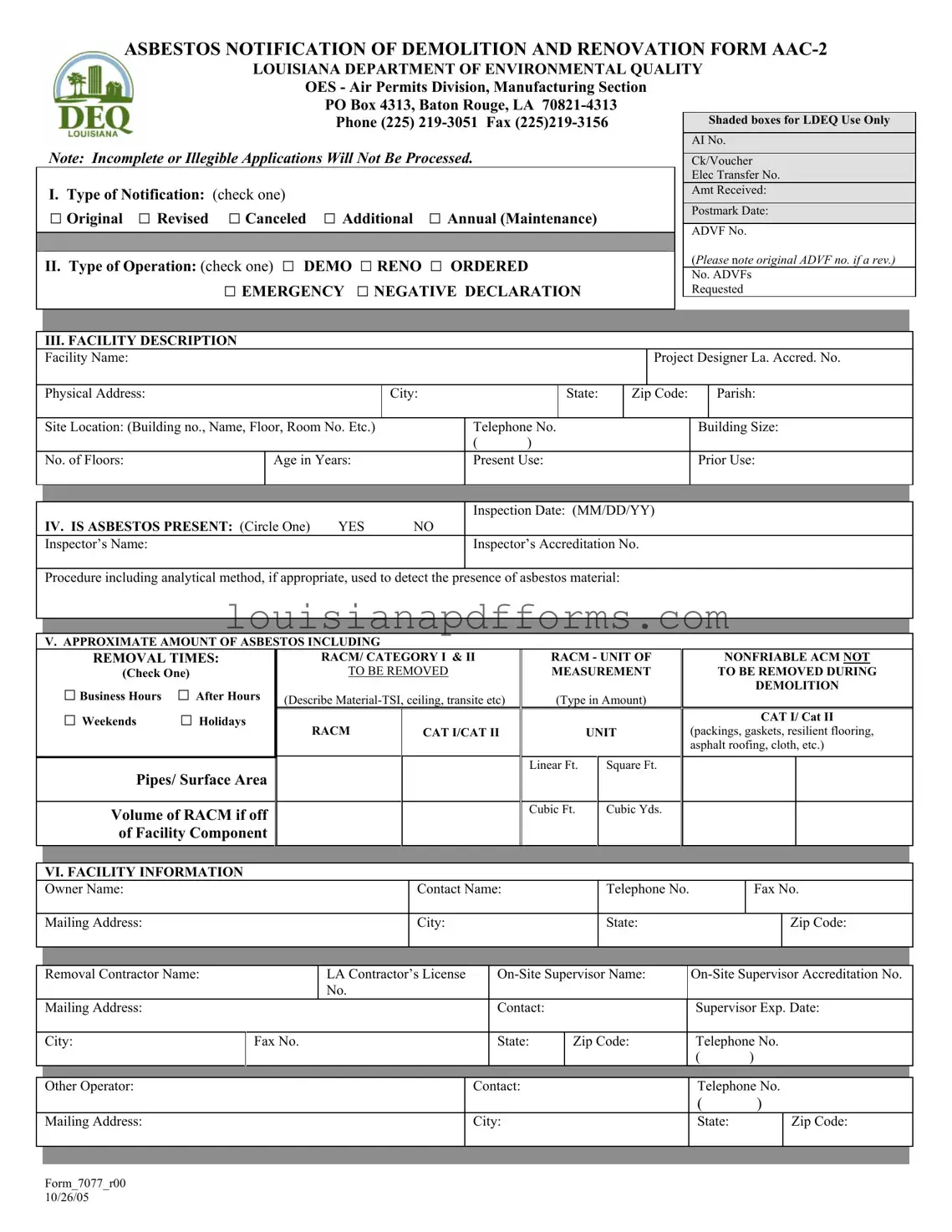Filling out the DEQ AAC-2 form can be a straightforward process, but many individuals and organizations make common mistakes that can lead to delays or rejections. One frequent error is failing to provide complete information in the required fields. Each section of the form has specific requests, and leaving any part blank can result in the application being deemed incomplete. It is essential to double-check that all necessary boxes are checked and that all relevant information is filled in accurately.
Another common mistake involves the selection of the type of notification. Applicants often forget to check the appropriate box indicating whether the submission is an original, revised, canceled, additional, or annual notification. This oversight can cause confusion and may lead to processing delays. Ensuring that the correct type of notification is marked helps streamline the review process.
Inaccuracies in the facility description section can also pose significant problems. For instance, omitting the physical address or providing an incorrect city or parish can hinder the Department of Environmental Quality's ability to process the application. It is crucial to verify that all location details are accurate and complete, as this information helps the agency understand where the work will take place.
Many people also overlook the importance of including the inspector's name and accreditation number in the section regarding asbestos presence. This information is vital for confirming that the inspection was conducted by a qualified professional. Failing to provide this detail may lead to questions about the validity of the inspection and can delay the overall process.
Additionally, applicants sometimes miscalculate the approximate amount of asbestos involved. This section requires specific measurements, and providing inaccurate figures can lead to complications during the removal process. It is advisable to carefully assess and document the amount of asbestos, ensuring that the data is precise and reflects the actual conditions of the facility.
Another mistake is not including the scheduled dates for asbestos removal and demolition or renovation. These dates are critical for planning and coordination, and missing this information can result in a lack of clarity regarding the timeline of the project. Applicants should ensure that these dates are clearly stated and formatted correctly to avoid confusion.
When it comes to the waste transporter information, individuals often fail to provide complete contact details or the correct transporter number. This oversight can create challenges in the waste disposal process. It is essential to verify that all transporter information is accurate and complete, as this ensures compliance with regulations and facilitates proper waste management.
Lastly, some applicants neglect to sign and date the form. This final step is crucial, as it certifies the accuracy of the information provided. An unsigned or undated form may be rejected outright, causing unnecessary delays. To prevent this, it is important to review the form one last time before submission to ensure that all necessary signatures and dates are included.


